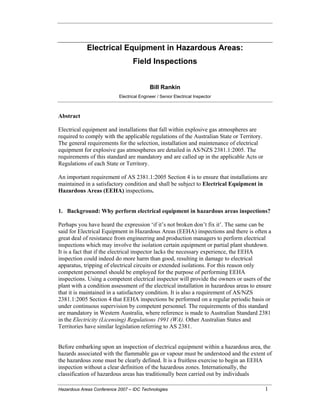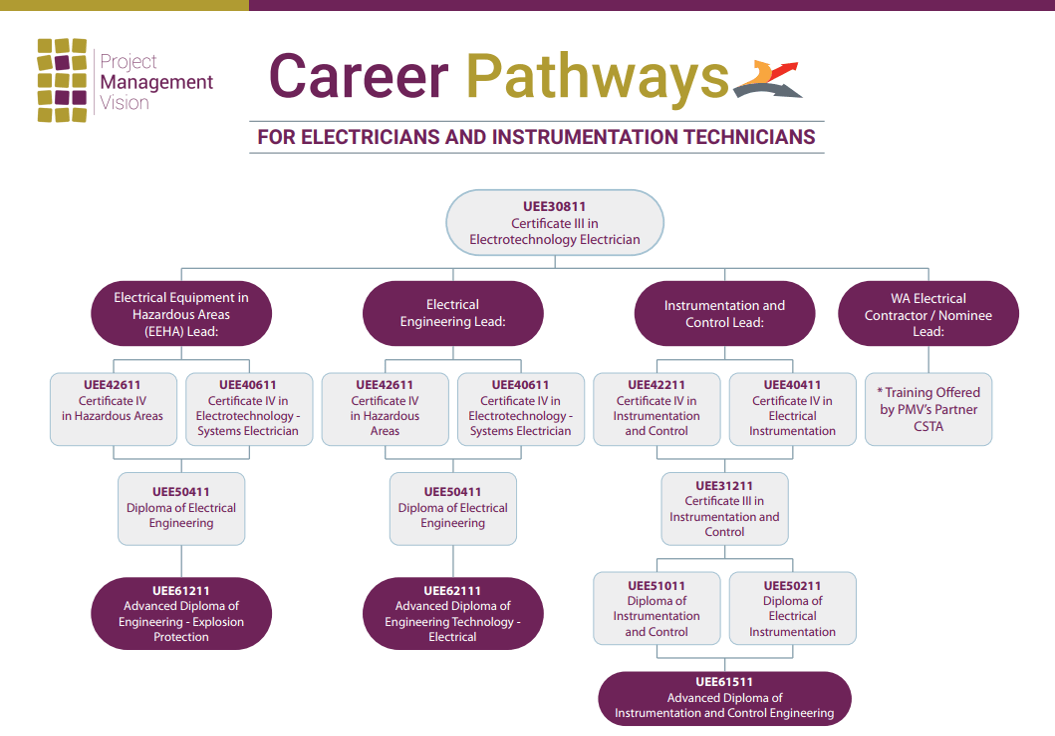The Roar Solutions Diaries
The Roar Solutions Diaries
Blog Article
The Best Strategy To Use For Roar Solutions
Table of Contents6 Easy Facts About Roar Solutions DescribedRoar Solutions Fundamentals ExplainedThe Facts About Roar Solutions Revealed
In order to protect setups from a possible surge an approach of analysing and categorizing a possibly hazardous location is called for. The function of this is to make sure the correct choice and setup of equipment to eventually protect against an explosion and to make sure safety and security of life.
(https://www.tripadvisor.in/Profile/roarsolutions)
No equipment needs to be installed where the surface area temperature of the equipment is higher than the ignition temperature of the provided risk. Below are some usual dust hazardous and their minimum ignition temperature level. Coal Dust 380C 225C Polythene 420C (melts) Methyl Cellulose 420C 320C Starch 460C 435C Flour 490C 340C Sugar 490C 460C Grain Dust 510C 300C Phenolic Material 530C > 450C Aluminium 590C > 450C PVC 700C > 450C Soot 810C 570C The chance of the hazard being present in a concentration high adequate to cause an ignition will vary from area to area.
In order to classify this danger a setup is split into locations of threat relying on the quantity of time the harmful is present. These locations are described as Areas. For gases and vapours and dusts and fibers there are 3 areas. Area 0 Area 20 A harmful ambience is highly most likely to be existing and may exist for extended periods of time (> 1000 hours annually) or even constantly Area 1 Area 21 A hazardous atmosphere is possible but unlikely to be existing for lengthy periods of time (> 10 450 C [842 F] A classification of T6 indicates the minimum ignition temperature is > 85 C [185 F] Dangerous area electrical devices possibly made for usage in greater ambient temperature levels. This would certainly suggested on the score plate e.g. EExe II C T3 Ta + 60C( This implies at 60C ambient T3 will not be surpassed) T1 T1, T2, T3, T4, T5, T6 T2 T2, T3, T4, T5, T6 T3 T3, T4, T5, T6 T4 T4, T5, T6 T5 T5, T6 T6 T6 A T Class ranking of T1 means the maximum surface temperature level produced by the instrument at 40 C is 450 C. Presuming the linked T Class and Temperature level rating for the equipment are ideal for the area, you can always use a tool with a much more rigid Division rating than required for the area. There isn't a clear response to this question. It actually does depend on the sort of equipment and what repairs require to be performed. Equipment with details examination procedures that can not be done in the field in order to achieve/maintain 3rd party ranking. Need to come back to the manufacturing facility if it is prior to the devices's solution. Area Repair Work By Authorised Employee: Challenging testing might not be required however particular treatments might need to be complied with in order for the devices to keep its third party rating. Authorised employees should be used to carry out the job properly Repair have to be a like for like replacement. New part must be taken into consideration as a direct replacement needing no unique testing of the devices after the fixing is total. Each tool with an unsafe rating must be reviewed independently. These are detailed at a high degree listed below, however for even more detailed information, please refer directly to the standards.
Roar Solutions Fundamentals Explained
The devices register is an extensive data source of devices documents that includes a minimum collection of areas to identify each item's location, technological parameters, Ex-spouse classification, age, and ecological data. This info is essential for tracking and managing the tools efficiently within hazardous areas. In comparison, for regular or RBI sampling evaluations, the quality will certainly be a mix of In-depth and Close evaluations. The ratio of Thorough to Close assessments will be figured out by the Devices Danger, which is examined based on ignition danger (the probability of a source of ignition versus the chance of a flammable atmosphere )and the unsafe location classification
( Area 0, 1, or 2). This variation will certainly additionally influence the resourcing demands for work preparation. Once Great deals are defined, you can develop sampling plans based upon the sample size of each Great deal, which describes the variety of random devices items to be checked. To establish the called for example size, two facets require to be examined: the dimension of the Whole lot and the group of examination, which indicates the level of initiative that must be applied( decreased, typical, or increased )to the inspection of the Great deal. By integrating the category of inspection with the Lot size, you can then establish the ideal being rejected standards for a sample, indicating the allowed number of malfunctioning products discovered within that example. For even more details on this procedure, please refer to the Power Institute Standards. The IEC 60079 common advises that the maximum period in between evaluations need to not exceed 3 years. EEHA assessments will likewise be carried out outside of RBI campaigns as part of arranged upkeep and equipment overhauls or repairs. These assessments can be attributed toward the RBI sample sizes within the impacted Lots. EEHA examinations are carried out to determine mistakes in electric devices. A heavy racking up system is essential, as a single tool might have numerous faults, each with differing levels of ignition risk. If the combined score of both examinations is less than two times the fault score, the Whole lot is deemed acceptable. If the Whole lot is still considered unacceptable, it needs to undertake a complete assessment or reason, which may activate more stringent inspection methods. Accepted Whole lot: The sources of any mistakes are determined. If an usual failing setting is discovered, additional devices might need maintenance. Faults are classified by intensity( Safety, Honesty, Housekeeping ), guaranteeing that urgent problems are analyzed and addressed without delay to alleviate any type of effect on security or operations. The EEHA data source should track and tape the lifecycle of mistakes together with the corrective activities taken. Implementing a robust Risk-Based Examination( RBI )technique is important for making certain compliance and safety and security in taking care of Electric Equipment in Hazardous Locations( EEHA) (Roar Solutions). Automated Fault Scoring and Lifecycle Monitoring: Effortlessly take care of faults and track their lifecycle to boost evaluation precision. The introduction of this assistance for risk-based evaluation even more enhances Inspectivity's setting as a best-in-class option for regulatory conformity, in addition to for any kind of asset-centric evaluation use case. If you want discovering more, we invite you to ask for a demonstration and find exactly how our option can change your EEHA management processes.
Roar Solutions Can Be Fun For Anyone

In regards to explosive threat, a dangerous area is an environment in which an explosive ambience exists (or might be expected to be present) in amounts that need unique Read More Here preventative measures for the construction, setup and use of equipment. eeha training. In this short article we check out the challenges encountered in the workplace, the threat control actions, and the called for proficiencies to function safely
It issues of modern life that we manufacture, store or take care of a range of gases or fluids that are deemed flammable, and a series of dirts that are considered flammable. These substances can, in certain problems, develop eruptive atmospheres and these can have major and tragic effects. Many of us recognize with the fire triangular remove any among the 3 aspects and the fire can not take place, however what does this mean in the context of dangerous areas? When breaking this down right into its most basic terms it is essentially: a combination of a specific quantity of launch or leakage of a particular substance or material, blending with ambient oxygen, and the presence of a resource of ignition.
In a lot of circumstances, we can do little about the levels of oxygen airborne, yet we can have considerable impact on resources of ignition, for instance electric devices. Harmful locations are documented on the harmful location classification drawing and are recognized on-site by the triangular "EX LOVER" sign. Here, among other essential information, areas are split into 3 types depending on the risk, the chance and period that an explosive atmosphere will exist; Zone 0 or 20 is considered one of the most dangerous and Zone 2 or 22 is considered the least.
Report this page